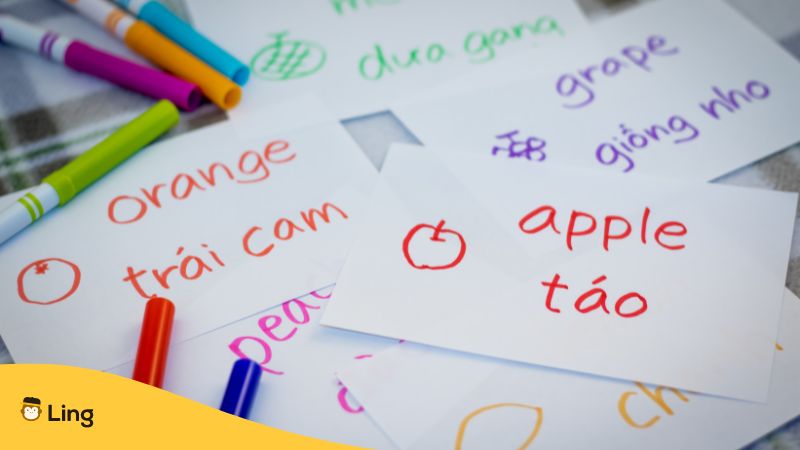Have you ever asked, ‘Is Vietnamese a tonal language?’ Well, in Vietnamese, the tone you use can determine the meaning of a word. That’s right! The subtle nuances of tone can transform the meaning of words in the Vietnamese language. This makes Vietnamese a tonal language that sounds melodic and musical when spoken.
Now, I know what you might be thinking: “Tonal language? What does that even mean?” Don’t worry, we’re going to break it down. It’ll be as easy as ABC, or should we say, as simple as “a, á, à, ả, ã, ạ” (those are Vietnamese tones, by the way).
What Are Tonal Languages?
For a language to be classified as tonal, the tone of a word has to affect its meaning. Languages like Vietnamese and Chinese are part of this fascinating linguistic category, as well as various members of the Austroasiatic language family. In these languages, as we mentioned, the pitch or tone with which a word is pronounced can significantly impact its meaning.
For example, the Vietnamese language boasts six tones, including the rising tone and the level tone, each of which can transform a word’s interpretation entirely. This distinctive feature sets tonal languages apart from non-tonal ones.
Tonal Languages Vs. Non-Tonal Languages
Tonal languages add a little twist to words. Instead of just relying on vowels and consonants, they use pitch and tone to convey meaning. So, in a tonal language like Vietnamese, the word “ma” can mean “ghost” if you say it one way or “mother” if you say it another way. Pretty fascinating, isn’t it?
Non-tonal languages, like English, rely more on variations in stress, intonation, and pitch to convey emotions and nuances in speech. English speakers often pronounce words syllable by syllable without the added complexity of tone variations. In these languages, the meaning of a word typically remains consistent, regardless of how it sounds, making them distinct from tonal languages.
Other Tonal Languages Around The Globe
Vietnamese isn’t the only language that loves to play with tones. There’s a whole bunch of them out there! Take Mandarin Chinese, for example. If you’ve ever heard someone speak Mandarin, you’ll notice how their tone can completely change the meaning of a word.
Then there’s Thai, where tones are like musical notes in a symphony of speech. Even in Africa, languages like Yoruba and Zulu have their tonal adventures. Each of these languages has its unique way of using pitch and tone to convey meaning, adding a musical twist to everyday conversations.

Exploring The Tonal Landscape Of Vietnamese
Delving into Vietnamese tones is like embarking on a mesmerizing journey through a musical landscape. The following six tones are pivotal in grasping the essence of Vietnamese, influencing word pronunciation and meaning.
The Six Tones In Vietnamese
In Vietnamese, syllables and words are spoken with six distinctive tones, each represented by different diacritic marks applied to vowels in the alphabet.
1.”Ngang” (Neutral Tone): This tone maintains a neutral, unchanged pitch. It’s used when there’s no diacritic mark, as seen in many words like “ma.”
2. “Huyền” (Deep Tone): This tone falls from a middle pitch to a lower one, conveying a sense of disappointment. It’s denoted by the diacritic “`” found in words like “mà.”
3. “Hỏi” (Question Tone): This tone sounds similar to a question, reflecting curiosity. The diacritic mark resembles a question mark and is placed atop the vowel, as in “mả.”
4. “Ngã” (Tumbling Tone): With a unique pattern, this tone slightly falls, then rises, falls again, and rises once more. It conveys contemplation and is marked by the diacritic “~,” as seen in “mã.”
5. “Sắc” (Rising Tone): This tone rapidly rises, resembling a quick ascent. It’s represented by the diacritic “´” as seen in the word “má.”
6. “Nặng” (Falling Tone): This tone is a brief, abrupt fall that feels like adding weight to the syllable, making it sound like it drops to the ground. It’s indicated by a dot-like diacritic under the vowel, as seen in “mạ.”
A Guide To Diacritic Marks
This section is all about the art of Vietnamese pronunciation, diacritic marks, and tones, as Vietnamese people use these marks to distinguish between the six tones in their language.
Here’s a table that provides an overview of these marks commonly used in Vietnamese, along with their corresponding pronunciations:
| Diacritic Mark | Tone | Example In Vietnamese | Pronunciation |
|---|---|---|---|
| á | High-rising | má (cheek) | |
| à | Mid-level | mà (but) | |
| ả | Low-falling | mả (grave) | |
| ã | Low level | mã (code) | |
| ạ | Low rising | mạ (plating) | |
| a (No Mark) | Flat | ma (ghost) |
Is Vietnamese A Tonal Language? Yes!
The journey of learning Vietnamese is more than just acquiring a new tonal language. It’s an invitation to explore the rich tapestry of tones, vowel sounds, and vibrant expressions. For aspiring Vietnamese learners, mastering the six different tones and achieving the higher pitch required for some native Vietnamese words might seem challenging, but it’s a journey well worth embarking upon.
The ability to skillfully pronounce these Vietnamese tones not only opens doors to effective communication but also grants a deeper understanding of the culture and its people. So, if you’re looking to broaden your linguistic horizons and experience the beauty of a language where every sound tells a story, start learning Vietnamese today. Your journey into this melodious world awaits!

Learn Vietnamese With Ling!
Ready to level up your language game? Say goodbye to dull memorization and hello to exciting learning with the Ling app! With Ling, you’ll effortlessly acquire new vocabulary, perfect your pronunciation, and unlock the doors to other languages. Don’t wait – start your language journey with the Ling app now!
Download the app on the App Store and Play Store today.



































































